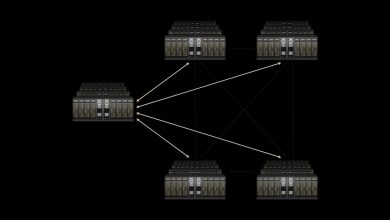What’s the Difference Between VMs and VDIs?

Virtualisation has become a cornerstone of modern computing, but navigating its various technologies can be confusing. Two terms that often trip people up are VM (Virtual Machine) and VDI (Virtual Desktop Infrastructure). While both leverage virtualisation, they serve distinct purposes.
VM: A Sandbox for Different Operating Systems
Imagine a VM as a software container that emulates a physical computer. Within this container, you can install an Operating System (OS), applications, and files. The beauty lies in running multiple VMs on a single physical machine. Each VM operates in isolation, with its own virtualised hardware like CPU, memory, and storage. This allows you to:
- Run incompatible operating systems: Need to test software designed for Windows on a Linux machine? VMs provide a safe, isolated environment.
- Consolidate server resources: Run multiple servers on a single physical machine, improving resource utilisation and reducing hardware costs.
- Develop and test software: Create isolated testing environments for developers to experiment without affecting the main system.
VDI: Delivering Desktops on Demand
VDI takes virtualisation a step further, focusing specifically on desktops. Here, the VM becomes the virtual desktop itself. A central server hosts numerous virtual desktops, each configured with a specific OS, applications, and user data. Allowing users to access these desktops remotely from any device with an Internet connection.

The benefits of VDI include:
- Improved manageability: IT can centrally manage and deploy desktops, simplifying software updates and security patches.
- Enhanced security: Since data resides on the server, the endpoint device becomes less vulnerable to breaches.
- Device independence: Users can access their desktops from any device, fostering remote work and BYOD (Bring Your Own Device) policies.
Key Differences: Focus and Management
The core difference lies in their focus. VMs offer a broader application, creating isolated environments for various purposes. VDI, on the other hand, is specifically designed for delivering virtual desktops.
Management also differs. VMs require individual setup and maintenance, whereas VDI, thanks to its centralised nature, allows for easier deployment and management of numerous virtual desktops.
Choosing Between VM and VDI
If your goal is to run multiple operating systems or create isolated testing environments, VMs are the way to go. But if your primary concern is delivering secure and manageable remote desktops, VDI is the better option. Ultimately, understanding the strengths of each technology helps you choose the right tool for the job.




